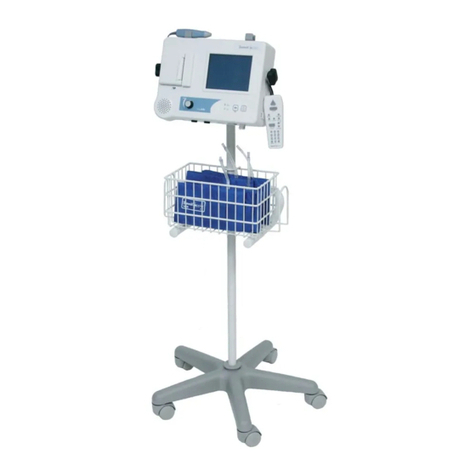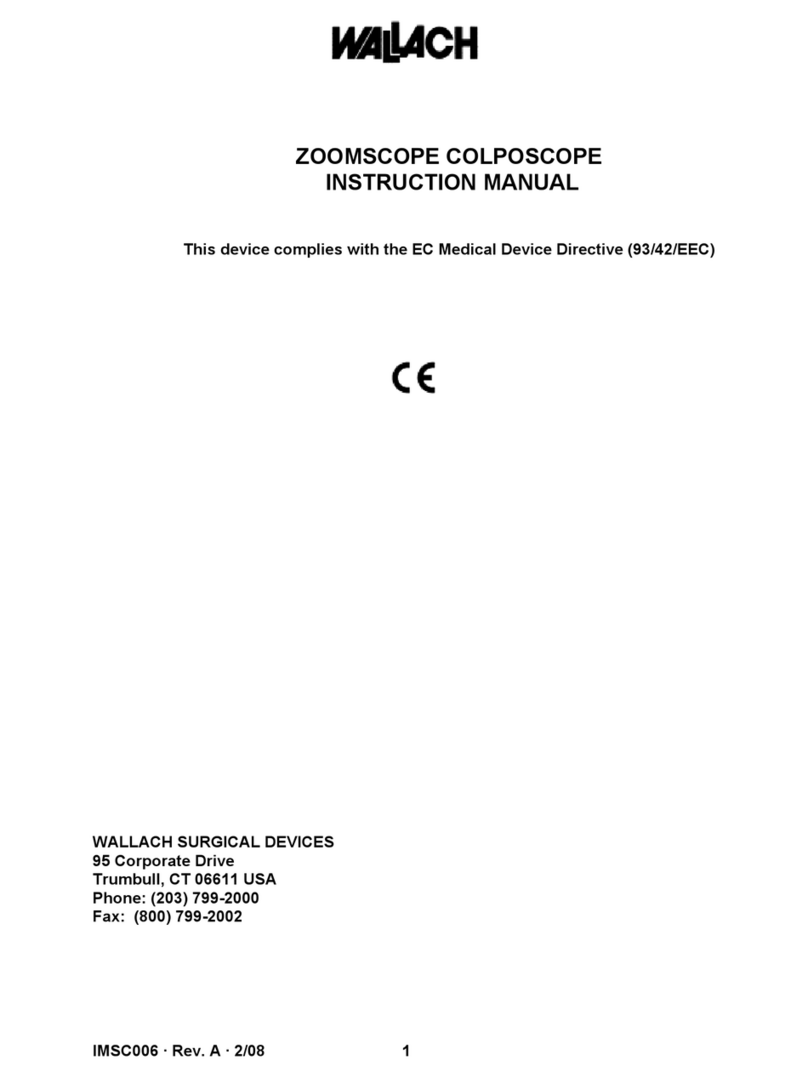
MAN0014-DFU • Rev. A • 5/13 5 Wallach Surgical Devices
SECTION 3: Description of Product and Controls
Description of Unit
The Vista AVS is a physiologic exam system designed to aid the clinician in the diagnosis
of peripheral arterial disease (P.A.D.). The unit includes a sensitive, bi-directional Doppler
system, arterial photoplethysmograph (PPG), and a pressure system that provides inflation,
controlled deflation, and pulse volume recording (PVR) capabilities.
The Vista AVS is well suited for the ankle brachial index (ABI) examination, the gold
standard for the diagnosis of P.A.D. The ABI compares the systolic blood pressure at the
ankles with the systolic pressure at the brachial arteries. A significantly reduced ankle
pressure results in a low (<0.9) ABI value, which indicates P.A.D. Systolic ankle pressures
are obtained with a pressure cuff and audio Doppler probe. ABI measurements are
discussed in detail in Section 6.
A single level, lower extremity arterial exam (CPT®93922) includes the ABI pressures,
calculated index, and arterial physiologic waveforms. Two types of waveform modalities
are provided on the Vista AVS: continuous-wave (CW), bi-directional Doppler and PVR.
Both of these waveform modalities meet the requirements of CPT 93922. Although both
modalities have significant clinical utility, it is generally not necessary to include both PVR
and Doppler waveforms in reimbursement documentation for CPT 93922 - either one is
sufficient. Waveform analysis is discussed in Section 12.
The Vista AVS is designed to perform segmental studies to compare three or more lower
limb pressures to the brachial pressures. This procedure is reimbursable under CPT code
93923 as a non-invasive, physiologic study of upper or lower extremity arteries, multiple
levels or with provocative functional maneuvers, complete bilateral study.
The Doppler waveform is a graph with a vertical axis (Doppler frequency shift, or pitch)
proportional to the velocity of arterial blood flow. Flow toward the probe is indicated above
the baseline. Flow away from the probe is indicated below the baseline. The 8 MHz,
bi-directional probe is best for superficial vessels and all-around use. The optional 5 MHz,
bi-directional probe is used for deeper vessels and with some obese patients.
Pulse Volume Recording (PVR) is a form of plethysmography, which is an indirect method
of limb volume measurement. A pressure cuff is applied to the limb and inflated to 65 mmHg
to detect the minute fluctuations in limb volume that occur with each heart beat. The PVR
waveform’s contour is a qualitative indicator of presence or absence of peripheral arterial
disease. This type of PVR does not permit calibration by injection of a known air volume
and is used for arterial waveform analysis.
Photoplethysmography (PPG) is an optoelectronic technique for detecting the small changes
of blood volume that occur in the capillary bed. Infrared (IR) light is emitted by the PPG
probe into the skin. Light reflected from the underlying tissue is received by a detector and
converted to an electrical signal. Since blood attenuates IR light at a higher level than the
surrounding tissue, the signal’s pulse contours are determined by the arterial blood supply.





























